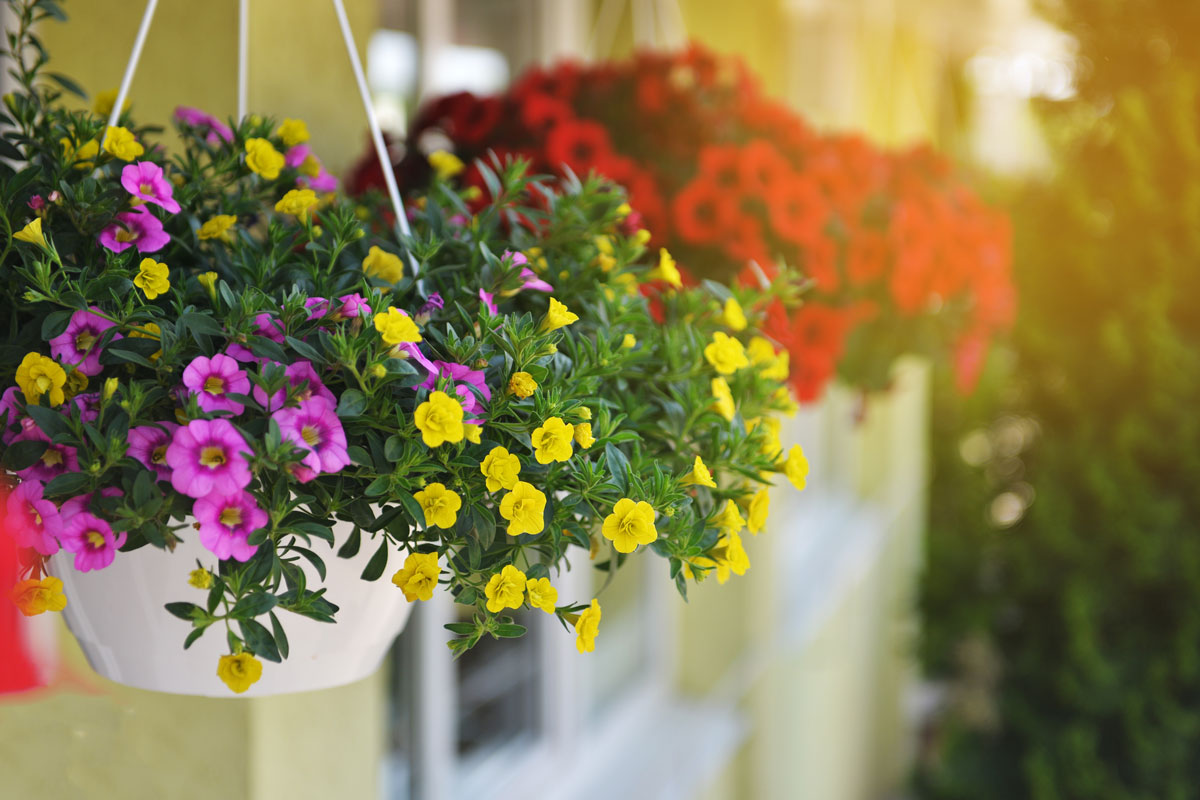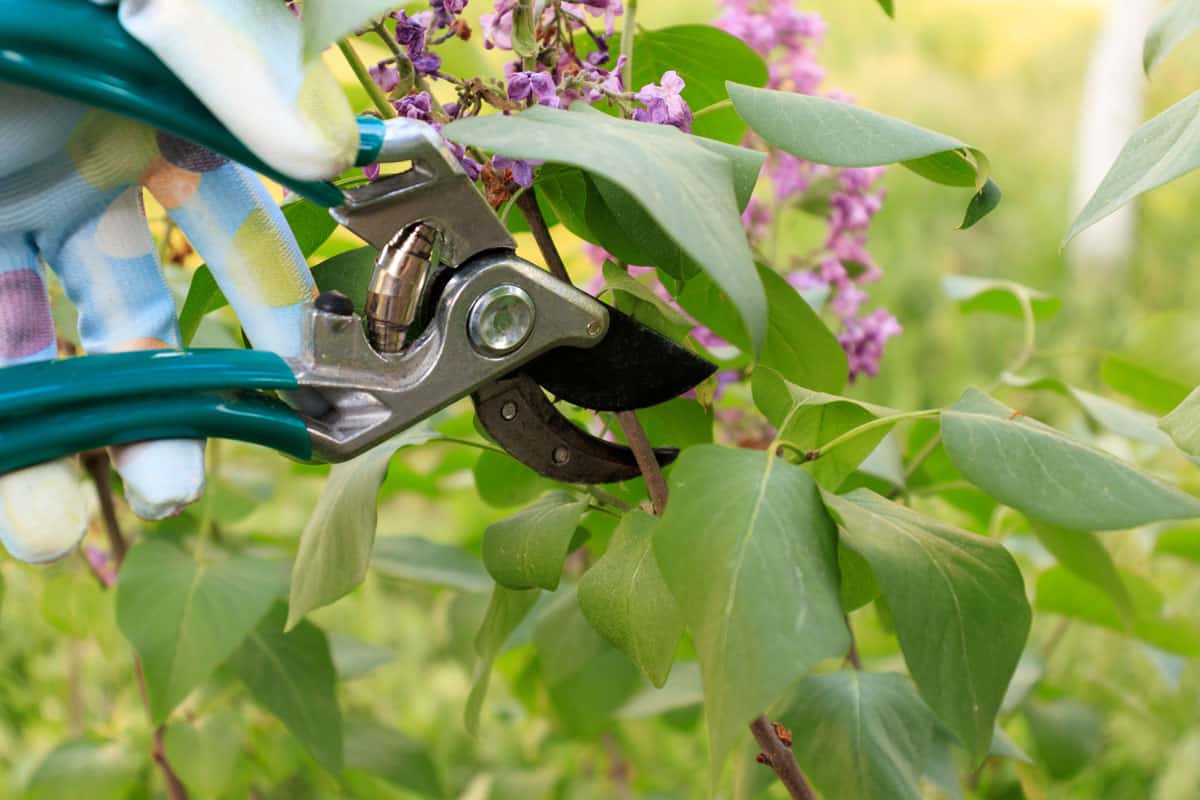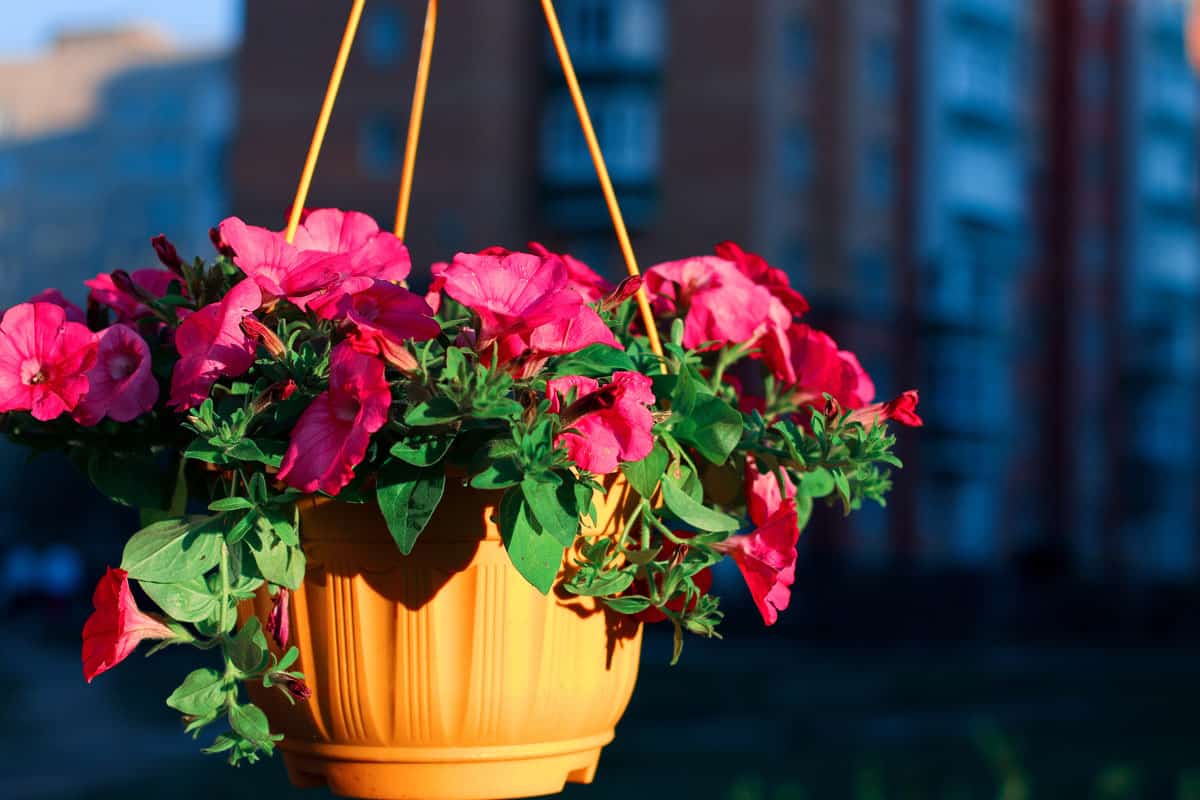Figuring out the right care schedule for your plants isn't always easy. For example, do you have something growing in a hanging basket and aren't sure if you need to prune it or not? What is the right way to cut back a hanging basket? Do you need to do anything at all?
Luckily, we've done plenty of research and have the answer below!
Although you don't necessarily need to cut back the plants in your hanging baskets, doing this can promote new growth and a healthier plant. Generally, trimming the ends of each branch on a hanging plant will get the ball rolling.
You want to try and shape unruly branches in your basket to give it a more uniform look. Additionally, it might be helpful to cut back the branches four inches to the soil, although that depends on the plant.
As we start, we will cover hanging baskets and teach you how to prune them. Whether you're new to vertical gardening, have an unruly plant, or need additional help, we've got your back. With that said, let's dive right into this topic!
Do I Need To Cut Back My Hanging Plant?

Depending on the plant, you might not always need to cut back a hanging basket. However, if your plant begins to extend too far downwards or becomes unruly, that's when pruning is helpful.
Most times, you want to keep a hanging plant maintained throughout the year. Whether it's indoors, on a screened patio, or hanging in your yard, your plant needs some structure.
As we mentioned before, some gardeners try and cut back the branches of their hanging plants four inches from the soil. This is more severe pruning, so you don't need to do it constantly.
Sometimes, routine shaping works better for flowers and small shrubs, which don't get unruly like other, more aggressive species.
According to many pros, regularly cutting back hanging baskets can keep them fuller. Generally, plants with some trimming schedule will fill out rather than become leggy or unruly.
Again, this is up to you and how fast your hanging plant grows.
Should I Cut Back My Hanging Baskets Every Month?
If your hanging plant grows fast, you may need to cut it back every month. Furthermore, if the growth is even more than moderate, you might find yourself giving the plant a trim every couple of weeks.
As we said, hanging baskets can get unruly quickly, depending on the species. Since your plant is growing in a small planter hanging from the ceiling/structure, it doesn't have anywhere to go but down.
Therefore, you might notice the stems of your hanging basket become leggy, reaching toward the sunlight. Your plant might even try and latch onto whatever's nearby, whether it's a wall, light fixture, or other hanging planter.
That's why creating a pruning routine or maintaining a shape for your hanging baskets is a good idea. You might notice that your plant becomes even a bit lusher after a few trims, which can be helpful in many ways.
Even trimming back the branches on your plant a couple of inches can make a significant difference. We recommend testing the waters and seeing what your hanging baskets respond best to.
Gonicc Premium Titanium Bypass Pruning Shears
These gardening shears have a heavy-duty design, are made of titanium material, feature a steel blade, can cut up to 3/4" diameter size branch, are eight inches, won't rust, and have non-slip handles.
Follow this link to see them on Amazon.
How Do You Prune A Hanging Plant?

When the time comes to prune your hanging basket, this shouldn't be too challenging. Typically, you want to start by grabbing a step ladder or sturdy chair/stool.
Next, trim any uneven or leggy branches from your plant using garden shears. Try and focus on creating a shape for your hanging basket, whether super pruned and perfect or still a bit wild.
The key is making sure you aren't pruning back your hanging plant too much or often. Remember, your plant needs time to regrow and heal each time you cut it back.
Moreover, not all hanging baskets need too much attention. During your pruning, look at what areas of your plant need the most TLC.
Super leggy branches could indicate a lack of soil nutrients or sun exposure, which trimming won't help with. You also want to try and avoid cutting blooms off flowering baskets, as this can stop them from coming back until next year.
To help you with this, here's a helpful YouTube tutorial on pruning hanging baskets:
You can see that this doesn't require too much trimming, but it can be beneficial to follow the natural shaping of your flower/shrub/etc.
What Happens If I Don't Prune My Hanging Basket?
If you skip pruning a hanging plant, this will usually result in legginess. Remember, hanging plants have nowhere to go but downwards, often leading to super lanky branches.
That can make your hanging basket look less put together, hence why routine pruning is recommended. Again, plants have different growth rates, so some will need more attention than others.
The time of year can also affect how often you need to trim, so expect a more hectic schedule in the spring and summer. Generally, the fall and winter are less productive for plants (hanging or not), so you might be able to wind things down around that period.
To maintain a specific shape, many gardeners choose to cut back a few inches off their hanging basket monthly. That can be an excellent idea for flowering baskets, as they need to stay thick to produce many blooms.
However, not all hanging plants want or need much or any pruning. So, if yours grows slowly and doesn't look leggy: feel free to leave it alone.
Can You Over Prune A Hanging Basket?

Like any plant, it is possible to overdo it with your pruning. Most times, when gardeners cut back their hanging baskets too severely, this results in dead sections.
Unfortunately, this is how your plant will tell you that you've gone too far. Sometimes, the hanging basket will lose certain branches or even die altogether if over-trimming continues.
As we mentioned, the best thing to do is monitor your plant and keep it in a particular shape. Maintaining a rounded hanging plant is the most popular method for flowers.
Furthermore, you want to cut a few inches of your plant back every few months. There is no need to do this weekly, as your plant won't regenerate.
Another thing to remember is that a hanging plant is more sensitive than one in the ground. Your basket limits the plant's space, hindering its roots from becoming deep/extensive.
So, try and keep your pruning routine, but not so much that your plant dies.
Can A Hanging Planter Become Too Heavy?

Yes! If you use super thick potting soil or your plant grows huge, that can make the hanging basket too heavy. Luckily, switching to lightweight soil should help keep your basket from falling.
In addition, you want to try and hang a basket fromsturdy beam or structure that won't mind 20-30 pounds. One of the issues with hanging baskets is that they aren't always easy on your home/building.
Especially for larger ones, you could be looking at 35+ pounds of dead weight, which isn't safe for many hanging methods. Again, the potting soil is the leading culprit here, so try and focus on that first.
We recommend a mix with plenty of perlite or vermiculite to take some weight off. Avoid rocks and sand in your hanging planter as well because they're very heavy.
If you follow these suggestions, you shouldn't run into any issues with your hanging basket. And if problems do persist, it could be time to prune or transplant your vegetation.
Where Is The Best Place To Hang A Plant Basket?

When it comes to the best place for a hanging basket, there are plenty of ideas. Generally, you'll find a hanging plant in the following rooms/spaces:
- The living room
- In a reading nook
- Within wall art
- On a patio
- In a nursery
- In a greenhouse
- Throughout a large hallway
- In the foyer
- Outside in the garden
So, you can see how there are endless options for "where" to hang your basket. Your main factor to consider is the sunlight in your house, which your plants need to grow.
Try and locate a bright window and hang your plants nearby. This will keep them full and healthy long-term. You might even want to hang your baskets in front or back of your home, so guests and neighbors can enjoy them.
If you live somewhere with nice weather, it might be better to keep everything outdoors. In contrast, if you live in a colder USDA zone, your hanging basket may need to shift in and outside throughout the year.
Don't be afraid to test out a few different locations!
To Finish Up
Whether you want to try growing plants in hanging baskets or have many, it's always good to come up with a pruning schedule. We found that you don't always need to cut back hanging plants, but this can benefit many.
For example, it's a good practice to shape your hanging basket, keeping it pruned to a specific size throughout the year. Doing this will maintain your basket's size and keep the plant healthy and lush.
If you forget to trim a hanging plant, it's likely to get leggy and be less attractive to look at. Therefore, we recommend cutting yours back a few inches each month and seeing how your plant responds.
And while we have your attention, check out these helpful related articles!
Best Soil Mix For Hanging Baskets [7 Top Options You Should Try!]

